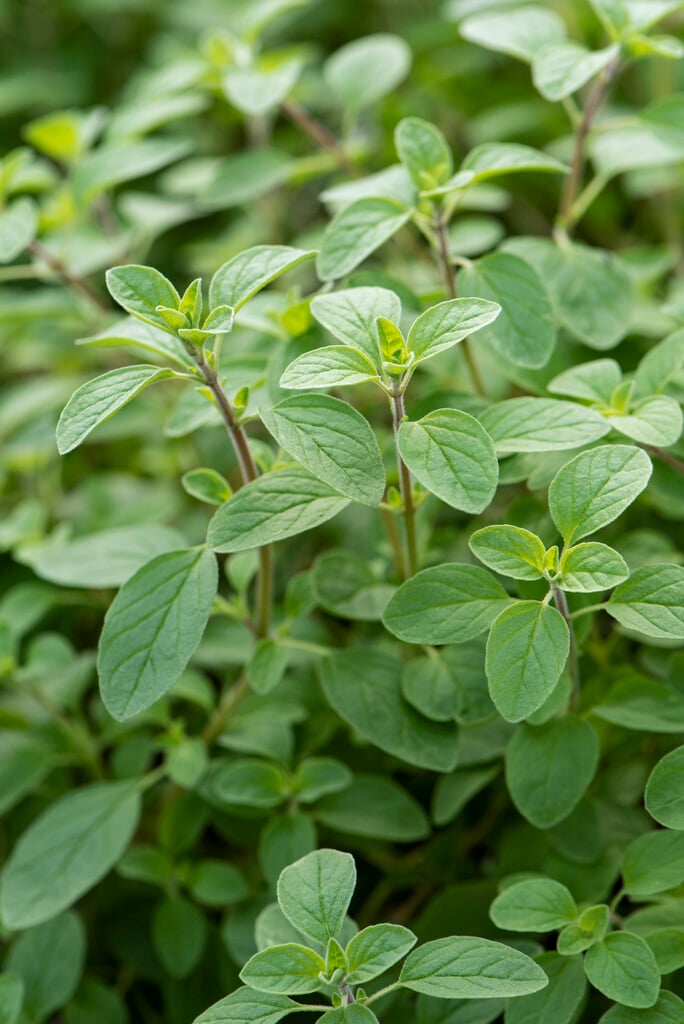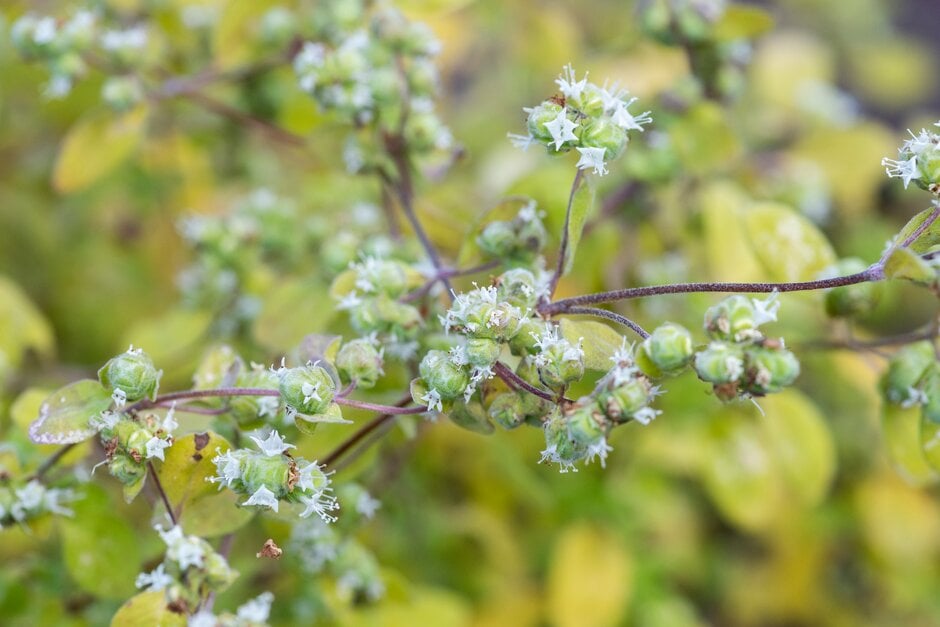Origanum majorana

sweet marjoram
An upright, tender perennial sub-shrub, 30-50cm tall, often grown as an annual or biennial; with aromatic, oval, softly hairy, edible grey-green leaves 1.5cm long and 1cm wide. Small, tubular, white flowers are held on wiry, somewhat feather-like stems in summer. Recommended in culinary circles for its flavour
Size
Ultimate height
0.5–1 metresTime to ultimate height
2–5 yearsUltimate spread
0.1–0.5 metresGrowing conditions
Moisture
Well–drainedpH
Neutral, AlkalineColour & scent
| Stem | Flower | Foliage | Fruit | |
| Spring | Green Grey Silver | |||
|---|---|---|---|---|
| Summer | White | Green Grey Silver | ||
| Autumn | Green Grey Silver | |||
| Winter | Green Grey Silver |
Position
- Full sun
Aspect
South–facing
Exposure
Exposed or Sheltered Hardiness
H2Botanical details
- Family
- Lamiaceae
- Native to GB / Ireland
- No
- Foliage
- Semi evergreen
- Habit
- Bushy
- Genus
Origanum may be herbaceous perennials or deciduous or evergreen sub-shrubs, with aromatic foliage and spikes of small tubular flowers usually with conspicuous bracts
- Name status
Correct
- Plant range
- Turkey, Cyprus
How to grow
Cultivation
Grow in well-drained soil in a sheltered, sunny position. This variety is frost-tender so in colder areas, may need protection from very low temperatures and excess winter wet. Also suitable for growing in containers that can be overwintered in an unheated greenhouse. For more advice see oregano cultivation. See rhs.org.uk/trials-awards
Propagation
Propagate by seed, or by division or basal softwood cuttings in spring
Suggested planting locations and garden types
- City and courtyard gardens
- Cottage and informal garden
- Patio and container plants
- Wildlife gardens
- Conservatory and greenhouse
Pruning
Cut back old flower stems in early spring
Pests
May be susceptible to aphids and red spider mite
Diseases
Generally disease-free
Love gardening
Sign up to receive regular gardening tips, inspiration, offers and more
View our Privacy Policy
Get involved
The Royal Horticultural Society is the UK’s leading gardening charity. We aim to enrich everyone’s life through plants, and make the UK a greener and more beautiful place.

